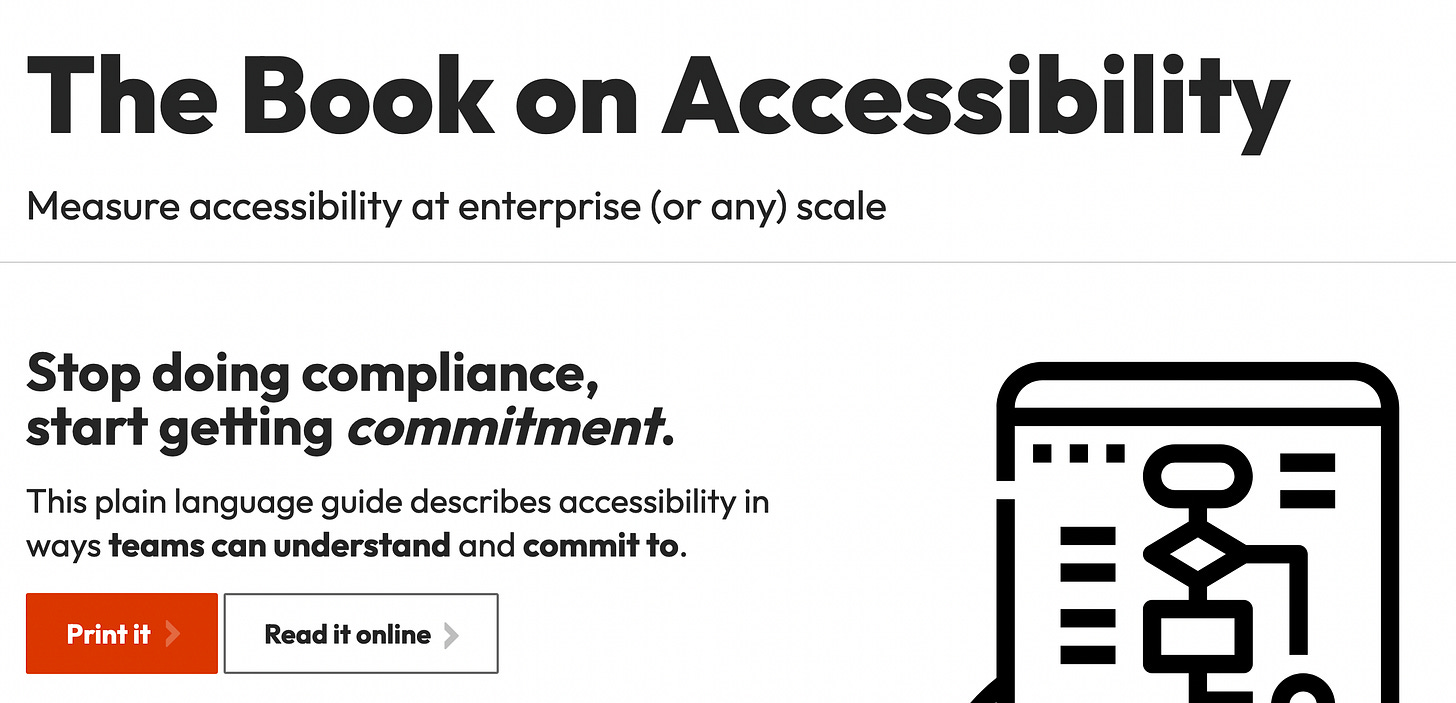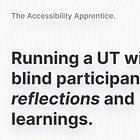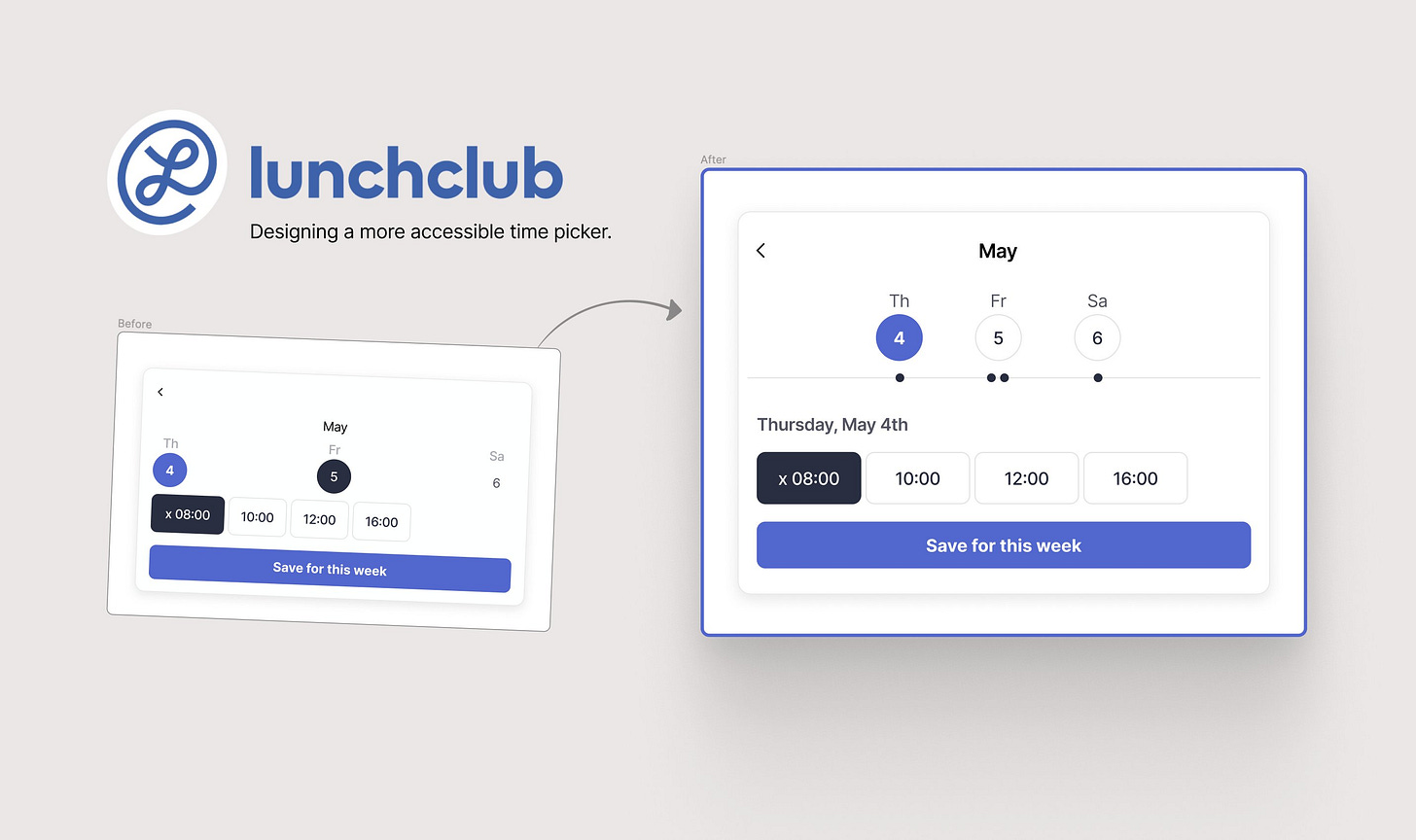#08. Getting started with accessibility.
If you are new to accessibility, this short guide will help you make your first steps and avoid common pitfalls.
This is “The Accessibility Apprentice”, a free accessibility newsletter. If you want to receive more insights, teardowns, and accessibility tips in your email once every other week, consider subscribing.
First things first.
Whether you are aspiring to pioneer accessibility at your organisation or merely hoping to learn a thing or two, the first thing you should focus on is gaining a good understanding of accessibility’s nature and importance.
Read up.
Do not jump straight into the abyss: WCAG standards are rather complex and often now accessible, as many industry practitioners highlight. Instead, find a good, human–friendly guide that will walk you through the basics.
Deque’s Beginner’s Guide to Web Accessibility is a good starting point for a novice accessibility specialist. It covers everything from terms and lingo (i.e., a11y, assistive technology) to guides and regulations, providing a good number of practical tips and highlighting the most critical areas.
The Book on Accessibility is another comprehensive collection of accessibility–centred materials, organised by roles and topics. It may feel somewhat overwhelming for a total beginner, but will come in handy later in the game.
Immerse yourself in the topic.
Empathy is key to becoming an accessibility specialist.
For instance, try (and encourage your team to try) using assistive technology on your devices. Once you have attempted to navigate a familiar app using a screen reader, your understanding of what users with visual impairments experience on a daily basis will change drastically.
Reaching out to the user is an even better way of understanding accessibility. Observing the people who rely on assistive technology will help you broaden your perspective of accessibility, see beyond checklists and formal requirements.
This very newsletter began as a reflection on the findings from an accessibility immersion session.
Practice makes perfect.
Accessibility is not a rigid set of formal requirements, so the only good way to master it is to practice accessible design. Be mindful of your digital environment and identify accessibility flaws as you encounter them. Explore ways of solving them: begin by conceptualising small components (like date pickers) and progress gradually.
Intopia’s Not a Checklist will help you ensure that your findings are accurate, and your solutions address the issue. Tools like Wave will come in handy to explore accessibility problems on websites you visit.
You are free to go as far as to propose the improvements to the subject of your concepts, or share them openly to collect feedback. Either way, try to invite some critique from established accessibility professionals: they will be more than happy to point out your mistakes and suggest further improvements.
Specialisation.
If you specialise in particular products, guides organised by product type may help you get in the groove: University of Washington’s guide, for instance, features separate sections for websites, videos, documents.
W3C offers a good and thorough set of guides for different professions: designers, writers, and developers will find their specific needs met in those detailed materials.
Staying up to speed.
Accessibility is a vibrant and fast-paced field: as technology evolves and changes, so do standards and requirements, and even seasoned professionals may struggle to stay up to speed with the most recent updates.
As a beginner, however, it is important to avoid information overload. Following industry leaders for general tips and suggestions is more than sufficient to gain a good theoretical comprehension. The rest is merely a matter of practice, time, and most importantly — empathy.
Accessibility requires understanding as much as it requires empathy and caring. Begin by developing these: understand what drives your curiosity, and think not about how to check all the boxes, but how to drive positive change for your users.
You are not alone.
Fighting an uphill battle is a daunting experience, and the gnawing feeling of loneliness amplifies it tenfold. It is essential to remember that you — an aspiring accessibility specialist — are not alone.
“The Accessibility Apprentice” was born in an attempt to reflect on a personal experience, but also to serve as an inspiration for the others. We stay together, exchange ideas, share insights, and support each other as we defend the universal right to unrestricted access.





